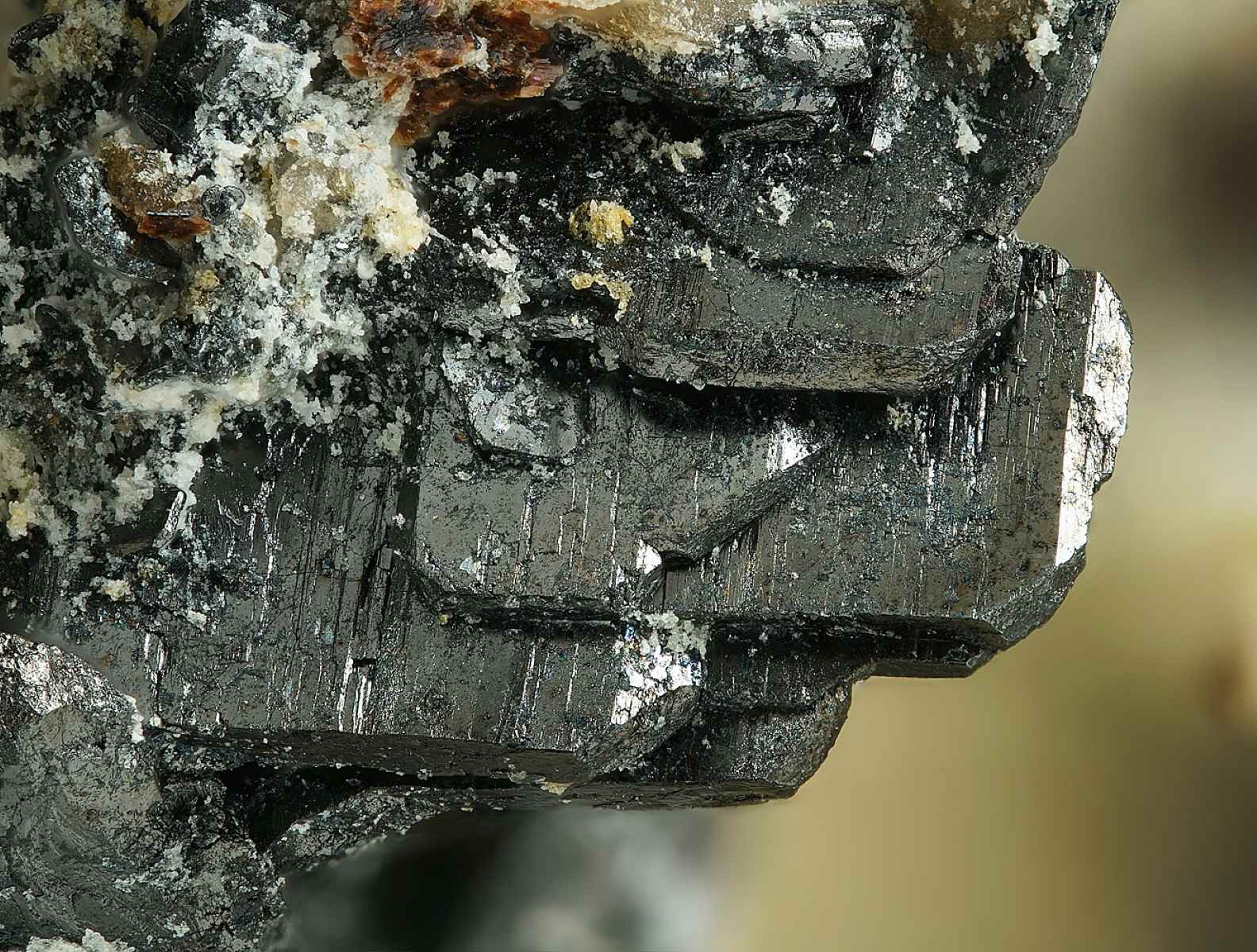
Columbite might sound like a superhero's sidekick, but it's actually a fascinating mineral with a rich history. Found primarily in Africa, this black, metallic ore is a major source of niobium, a metal used in everything from jet engines to MRI machines. Did you know that columbite often occurs alongside tantalite, forming a mineral duo known as coltan? This mineral is not just a geological curiosity; it's a key player in modern technology. From its role in electronics to its impact on global trade, columbite is more than just a rock. Ready to learn some amazing facts about this intriguing mineral? Let's dig in!
Key Takeaways:
- Columbite, also known as niobite, is a black mineral found in granite and pegmatite. It's important for niobium and tantalum, used in steel, electronics, aerospace, and medical devices.
- Columbite is found in Africa, Brazil, Canada, Australia, and the United States. However, mining it can have environmental and ethical concerns, so efforts are being made for ethical sourcing and sustainable practices.
What is Columbite?
Columbite is a black mineral that is often found in granite and pegmatite. It is an important source of niobium and tantalum, which are used in various high-tech applications. Here are some fascinating facts about this mineral.
-
Columbite is also known as niobite. This name comes from its niobium content.
-
It was first discovered in the early 19th century. The mineral was identified in 1801 by Charles Hatchett.
-
Columbite is often found with tantalite. Together, they form a mineral series known as coltan.
-
It has a submetallic luster. This gives it a shiny, almost metallic appearance.
-
The mineral is typically black or brown. Its color can vary depending on its composition.
-
Columbite is an oxide mineral. It consists of niobium, iron, and manganese oxides.
-
It has a high density. This makes it heavier than many other minerals.
-
The mineral is brittle. It can easily break or crumble under pressure.
Uses of Columbite
Columbite is not just a pretty mineral; it has several important uses, especially in modern technology.
-
Niobium extracted from columbite is used in steel production. It helps to improve the strength and flexibility of steel.
-
Tantalum from columbite is used in electronics. It is a key component in capacitors and high-power resistors.
-
It is used in the aerospace industry. Niobium alloys are used in jet engines and rocket subassemblies.
-
Columbite is also used in medical devices. Tantalum is biocompatible, making it suitable for surgical implants.
-
It plays a role in the production of superalloys. These are used in high-temperature environments like gas turbines.
-
The mineral is used in the glass industry. Niobium helps to improve the refractive index of glass.
-
It is used in the production of camera lenses. Tantalum oxide is used to make high-quality optical glass.
Where is Columbite Found?
Columbite can be found in various parts of the world, often in regions rich in granite and pegmatite.
-
It is commonly found in Africa. Countries like Nigeria, Rwanda, and the Democratic Republic of Congo are major producers.
-
Columbite is also found in Brazil. The country has significant deposits in its Minas Gerais region.
-
It can be found in Canada. The mineral is present in the provinces of Manitoba and Ontario.
-
Australia has columbite deposits. These are mainly located in Western Australia.
-
The United States also has columbite. It is found in states like Colorado and South Dakota.
-
It is often mined alongside tin. This is because columbite and tin are commonly found together in the same deposits.
-
Columbite can be found in alluvial deposits. These are formed by the action of water, which concentrates the mineral in riverbeds.
Interesting Facts About Columbite
Columbite has some unique properties and historical significance that make it an interesting mineral to study.
-
It was named after Christopher Columbus. The name "columbite" is derived from "Columbia," a poetic name for America.
-
The mineral is radioactive. It contains trace amounts of uranium and thorium.
-
Columbite has a high melting point. This makes it useful in high-temperature applications.
-
It is resistant to corrosion. This property is particularly valuable in the chemical industry.
-
The mineral is used in geochronology. Scientists use it to date geological events.
-
Columbite has a complex crystal structure. It belongs to the orthorhombic crystal system.
-
It is often found in large crystals. Some specimens can weigh several kilograms.
-
The mineral is used in jewelry. Its shiny appearance makes it a popular choice for decorative items.
Environmental and Ethical Concerns
Mining columbite has significant environmental and ethical implications that need to be considered.
-
Columbite mining can cause deforestation. This is particularly an issue in tropical regions.
-
It can lead to soil erosion. The removal of vegetation destabilizes the soil.
-
Mining operations can pollute water sources. Chemicals used in the extraction process can contaminate rivers and lakes.
-
There are ethical concerns about columbite mining. In some regions, mining is linked to human rights abuses and conflict.
-
Efforts are being made to ensure ethical sourcing. Initiatives like the Conflict-Free Smelter Program aim to address these issues.
-
Recycling can reduce the need for mining. Tantalum and niobium can be recovered from electronic waste.
-
Sustainable mining practices are being developed. These aim to minimize environmental impact.
-
Local communities can benefit from mining. When managed responsibly, mining can provide jobs and infrastructure.
-
There is a growing demand for transparency. Consumers and companies are increasingly seeking information about the origins of their materials.
-
Research is ongoing to find alternatives. Scientists are exploring other materials that can replace niobium and tantalum in various applications.
Final Nuggets on Columbite
Columbite, a lesser-known mineral, holds significant value in various industries. Its primary use in the production of tantalum capacitors makes it indispensable in electronics. Found mainly in Africa, columbite is often mined alongside tantalite, forming the coltan ore. This mineral's unique properties, like high density and resistance to corrosion, make it crucial for aerospace and medical applications. Despite its importance, columbite mining raises ethical concerns due to environmental impacts and labor practices. Understanding these facts helps appreciate columbite's role in modern technology and the challenges surrounding its extraction. So, next time you use a smartphone or laptop, remember the tiny but mighty mineral that makes it all possible.
Frequently Asked Questions
Was this page helpful?
Our commitment to delivering trustworthy and engaging content is at the heart of what we do. Each fact on our site is contributed by real users like you, bringing a wealth of diverse insights and information. To ensure the highest standards of accuracy and reliability, our dedicated editors meticulously review each submission. This process guarantees that the facts we share are not only fascinating but also credible. Trust in our commitment to quality and authenticity as you explore and learn with us.


